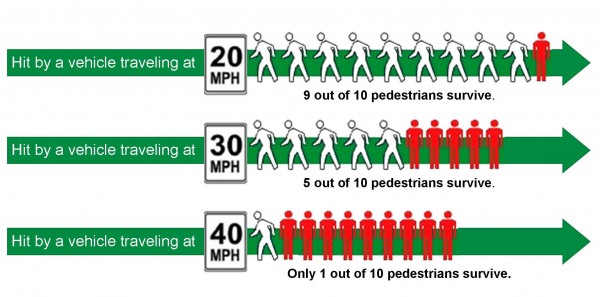Fort Worth Joins Houston in Pursuit of Safe Neighborhood Streets

City Councilwoman Ann Zadeh is leading the charge in Forth Worth to make neighborhood streets safer through better design and lower speed limits, according to WFAA, NBCDFW, and the Fort Worth Star-Telegram. Zadeh joins the City of Houston in pushing the state legislature to adopt a “Safe Neighborhood Streets ” bill to lower the default speed limit from 30 mph to 25 mph, and even suggests that lowering it statewide to 20 mph would be even better.

I worked with State Senator (now Harris County Commissioner) Rodney Ellis and the City of Houston Public Works and Engineering Department to file a version of the Safe Neighborhood Streets bill in 2015, but we did not get a hearing on the issue.
The City of Houston has been taking steps to design streets for safer speeds since Mayor Annise Parker made a push for complete streets in 2013. PWE already made a very significant change in its Infrastructure Design Manual related to safe speeds, specifying that a street’s design speed must match the posted speed limit. This differs from the practice still used in most cities and on TXDOT feeder roads, which designs streets for much higher speeds than the posted limit.
However, under current Texas law, the City of Houston can only design streets for 30 mph as a default. For streets with lower speed limits, the city has to put up two signs on every block. Houston PWE estimated that lowering speed limits on neighborhood streets to 25 mph could cost up to $5 million just to print the signs.
Houston Mayor Sylvester Turner has authorized PWE to continue the effort to design streets for safer speeds and to collaborate with other cities across Texas to pursue the statewide change.
A bill has not yet been filed for the 2017 legislative session, but several lawmakers are working on drafting one.
Please contact your senate and house representatives today and ask them to support a Safe Neighborhood Streets bill to lower the default speed limit.
The Austin City Council Mobility Committee will hear a report from the Austin Transportation Department on their assessment of the role of speed limits and design speed on Wednesday, December 7 at 3 p.m. in council chambers. Previously, the Pedestrian Advisory Council recommended city staff study design speed and speed limits, initiate pilot programs in several neighborhoods, and support a statewide bill.
Vision Zero ATX is advocating for a two-part strategy to make Texas neighborhoods safe for children through design speed [PDF] and lower speed limits for neighborhood streets statewide [PDF].
At the Austin World Day of Remembrance for victims of traffic violence, a new campaign was launched — Vision Zero Texas, which will work to educate the public and legislators on this issue, bring together public servants and activists from across the state, and push for a comprehensive statewide plan to end traffic deaths.
This post is made possible by a grant from Sutliff & Stout, an accident and injury law firm in Houston Texas. The content is Streetsblog’s own, and Sutliff & Stout neither endorses nor exercises any editorial control.